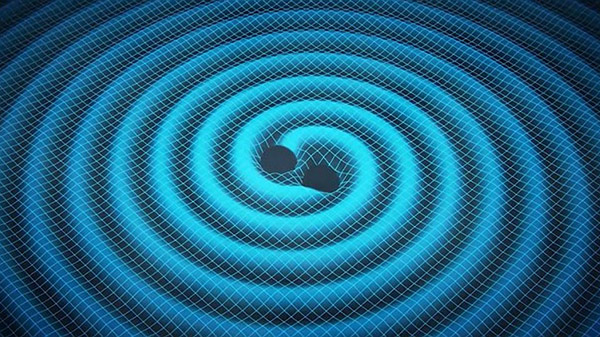ABCs of gravitational waves
Updated: 2016-02-14 15:56
(chinadaily.com.cn/Agencies)
|
||||||||
Scientists said on Thursday they have for the first time detected gravitational waves, ripples in space and time hypothesized by physicist Albert Einstein a century ago, in a landmark discovery that opens a new window for studying the cosmos.
Discovering gravitational waves would be a huge deal for physics, cosmology, and our understanding of the universe at large. But if you're not a scientist studying one of the aforementioned fields, it's possible you've never heard of these mysterious ripples. So what are gravitational waves and why is the discovery so significant?
 |
|
Visualization - Gravitational waves generated by a binary system. [Photo/NASA] |
What are gravitational waves?
Gravitational waves are disturbances in space-time, the very fabric of the universe, that travel at the speed of light. The waves are emitted by any mass that is changing speed or direction. The simplest example is a binary system, where a pair of stars or compact objects (like black holes) orbit their common center of mass.
We can think of gravitational effects as curvatures in space-time. Earth's gravity is constant and produces a static curve in space-time. A gravitational wave is a curvature that moves through space-time much like a water wave moves across the surface of a lake. It is generated only when masses are speeding up, slowing down or changing direction.
- ASEAN wants good US-China relations
- Jury finds NYPD's Liang guilty in fatal shooting
- Major powers agree on plan to break Syria deadlock
- Munich Security Conference opens amid concerns
- General strike against pension reform brings Greece to standstill
- Madrid airport sounds alarm after bomb threat on Saudi plane

 Clash of civilizations in a fairytale village
Clash of civilizations in a fairytale village
 Cultural exhibition opens at Tibet Museum in Lhasa
Cultural exhibition opens at Tibet Museum in Lhasa
 Premium cars at Canadian Autoshow
Premium cars at Canadian Autoshow
 Smell the roses: Flower traders see Valentine's Day rush
Smell the roses: Flower traders see Valentine's Day rush
 Railway stations witness post-holiday travle peak
Railway stations witness post-holiday travle peak
 Spectacular Harbin snow sculptures draw holidaygoers
Spectacular Harbin snow sculptures draw holidaygoers
 First Capitol billing for Lunar New Year
First Capitol billing for Lunar New Year
 All you need to know about China's Spring Festival temple fairs
All you need to know about China's Spring Festival temple fairs
Most Viewed
Editor's Picks

|

|

|

|

|

|
Today's Top News
National Art Museum showing 400 puppets in new exhibition
Finest Chinese porcelains expected to fetch over $28 million
Monkey portraits by Chinese ink painting masters
Beijing's movie fans in for new experience
Obama to deliver final State of the Union speech
Shooting rampage at US social services agency leaves 14 dead
Chinese bargain hunters are changing the retail game
Chinese president arrives in Turkey for G20 summit
US Weekly

|

|







